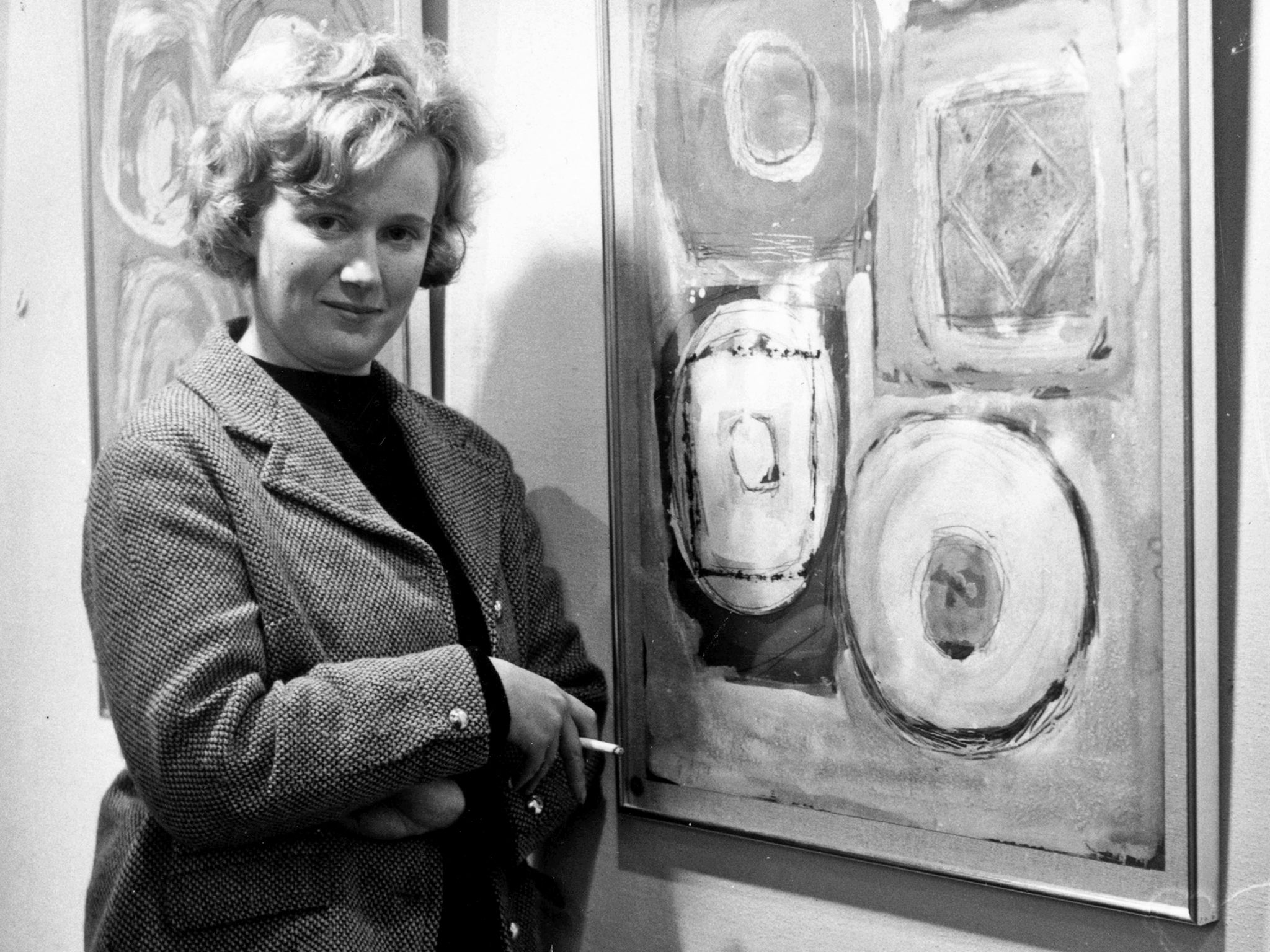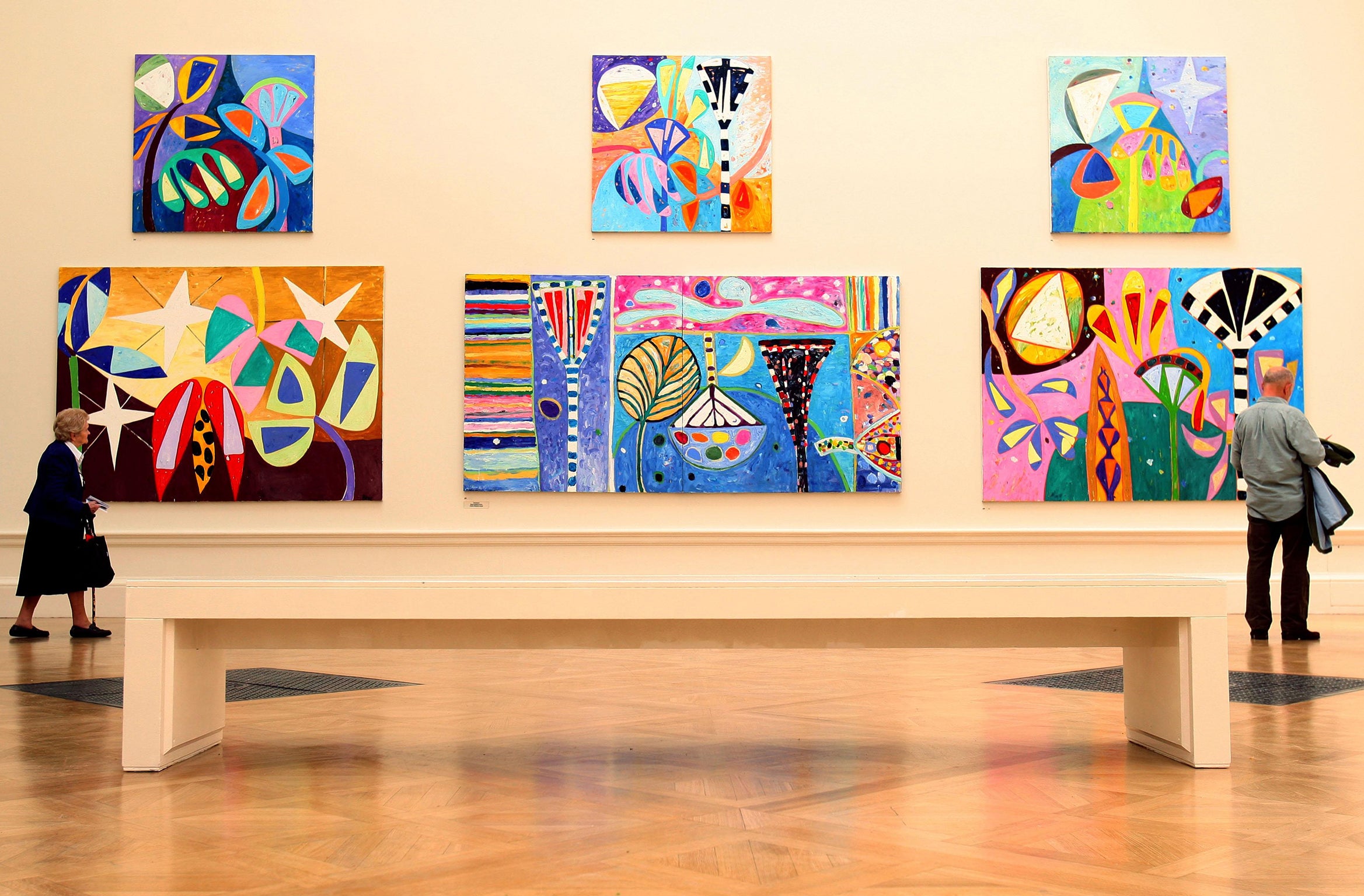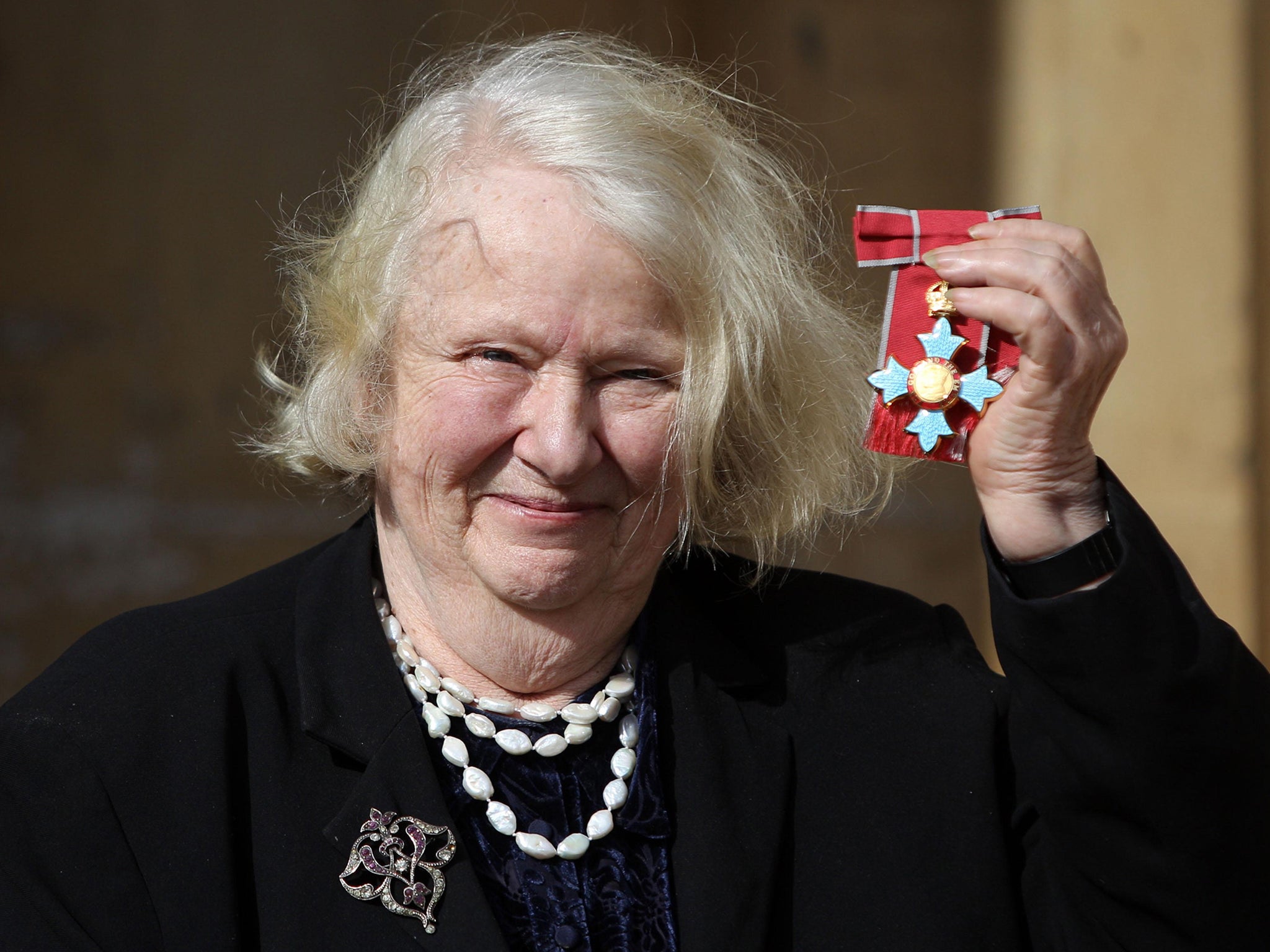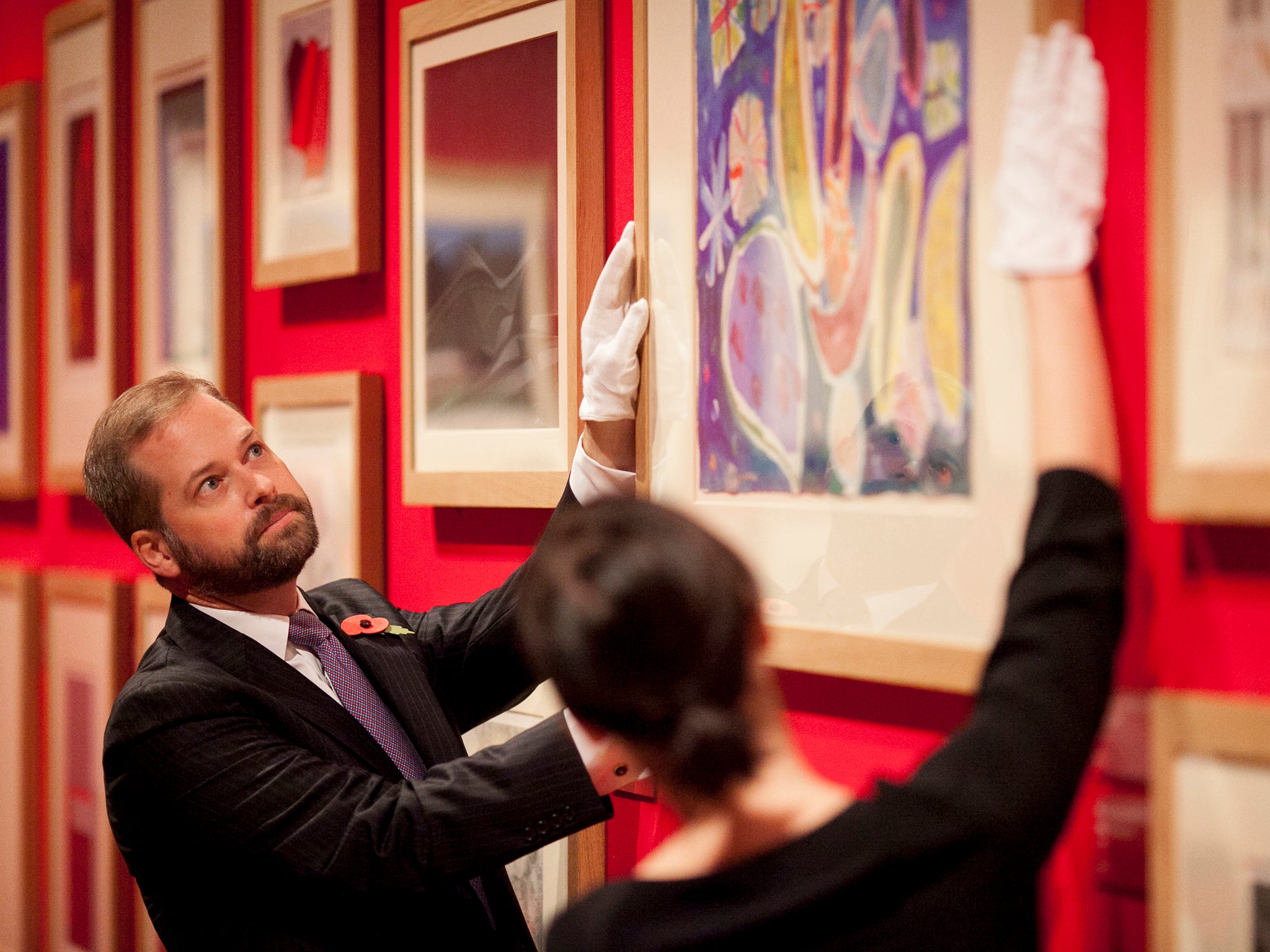Gillian Ayres: Abstract painter whose work was rooted in the beauty and colour of the real
Her single-minded commitment and passion for the visual rose above the trends of the day and kept her art infused with freshness, boldness and joy

Your support helps us to tell the story
From reproductive rights to climate change to Big Tech, The Independent is on the ground when the story is developing. Whether it's investigating the financials of Elon Musk's pro-Trump PAC or producing our latest documentary, 'The A Word', which shines a light on the American women fighting for reproductive rights, we know how important it is to parse out the facts from the messaging.
At such a critical moment in US history, we need reporters on the ground. Your donation allows us to keep sending journalists to speak to both sides of the story.
The Independent is trusted by Americans across the entire political spectrum. And unlike many other quality news outlets, we choose not to lock Americans out of our reporting and analysis with paywalls. We believe quality journalism should be available to everyone, paid for by those who can afford it.
Your support makes all the difference.A streak of rebellious cussedness always drove on this most spiritedly single-minded of postwar British abstract painters. Her paintings were above all things else exuberant celebrations of the lived moment; created by a fanatical atheist (she used to have long, long conversations about the thrills and the merits of militant atheism with her friend the late novelist Angela Carter) who regarded painting as, finally, the only thing worth doing because somehow, the art she practised doggedly for more than 60 years was a species of life-affirming truth telling.
And wasn’t truth undeniably beauty and beauty undeniably truth, as the poet John Keats once wrote? Gillian Ayres, face characteristically wreathed in cigarette smoke, and a great lover of poetry herself, would surely have given one of her fierce nods of affirmation to that statement. And there was even something fist-shakingly defiant in her favoured choice of cigarette: Player’s Navy Cut, untipped, full strength, and (as David Hockney – another hard-line puffer – would also tell you if you asked him) damn the consequences.
She was born in Barnes in south-west London in 1930, and she lived there until she was 50. Her parents were prosperous and respectable, and Ayres’s own voice, for all her lifelong rebelliousness, was surprisingly fruity. By the age of 13 she was already determined to be both an artist and an independent-minded naysayer. She attended St Paul’s School for Girls in West London (Shirley Williams was a friend and exact contemporary), but refused to take her exams.
Exams were far too bourgeois. Instead, she went to Camberwell College of Art at the age of 16, working alongside another young painter called Euan Uglow, though he would always remain of the figurative bent. Later she taught in various art schools, rising to the position of head of painting at Winchester School of Art; the first woman to be awarded that job. In 1951 she married the painter Henry Mundy.

Their son Sam, who became a painter too, was born in 1966. Ayres and Mundy later divorced, but that was by no means the end of their story. Some years after the parting of the ways, Henry turned up at the door of the rectory where she was then living, and she let him in again. He became her lifelong companion. They never remarried.
Her public exposure as a painter began in 1949, when she was exhibited in the first Young Contemporaries exhibition. In 1957 she was commissioned to paint a mural in four panels for the dining hall of South Hampstead High School. Being determinedly Ayres, she used common-or-garden house paint.
It was a dogged and singleminded dedication to the art of her own making which mattered to her most, and she achieved the freedom to paint full-time later on in her life when she moved first to Wales; then, in 1987, to a remote property near Morwenstow in Cornwall, which you reached by a perilous journey along an up-hill-and-down-dale, hair-raisingly narrow lane.
Although the paintings of her maturity were always abstract, there was nothing severe or self-consciously intellectualised about them. Not for her the rigours of geometry. Not for her an art which required bolstering by abstruse theory. She preferred her favoured mode of abstraction to err on the side of a kind of decorative unruliness. Beauty always got more than a look in. She never worked to a theme, and she did not make paintings in series. Each new work was a fresh beginning, a playful dicing with the materials to hand. And in order to achieve the richness of her best work, she drew on the deep well of her own experience of being alive in the world as an insatiably greedy looker.

The way that the shapes of her later paintings often seem to work in harmony with each other gives them more than a hint of collage. The motifs that so often recur in some of her later works – star shapes or palm shapes – seem to yearn to be recognised as elements out in the world, and she was always perfectly relaxed if friends or critics identified them as such. She was no purist, no dogmatist. Her paintings, the best of which were large, loud, fierce and bold, were always eye-pleasing in the shapeliness of their forms and the scatter brilliance of their colours.
In spite of the fact that she had in her early years learnt much from the New York Abstract Expressionists – early appreciations of her often refer to her as a Colour Field artist and, like Pollock, she was once in the habit of laying out her canvases on the floor and attacking them from above – not for her was the kind of abstraction which would be rendered severe by overmuch austerity, little or no colour, or a poker-faced religiosity. In fact, her painter-gods were those who celebrated colour – notably Matisse and Titian – and hers was a kind of lyrical paganism, an oblique celebration of the forms of nature, which were ever present in her work, and often even almost recognisable as such.
There were tragedies, of course. One of the greatest of these was the fire in a London art-storage warehouse in 2004 that destroyed some of the best of her early works. She felt this loss to the depths of her being. It felt somewhat akin to the loss of a child.
She was never a solitary human being, but her painting was often made in seeming defiance of passing trends. In the 1990s, when conceptual and video art ruled the roost, she carried on regardless, making the art that she had always made. In her opinion, the central problem of conceptual art could be expressed quite simply: it lacked any genuine passion for the visual. Her wish, always, was to use the expressive power of paint to the full, not to be sparing or penurious when panache was called for.
Rubens would have understood that impulse exactly. Even in the dull-as-dust years of the 1980s and 1990s, she was still very much in the public eye. In 1989, to the surprise of many, both she and Lucian Freud were shortlisted for the Turner Prize. Perhaps the young were not always in the driving seat after all.
Words such as exuberance, joyousness and opulence of form were bandied about in her praise at the time, which helped to remind audiences that Ayres was not a lonely practitioner at all. In fact, she was the latest in a long line of European painters that had included Chardin, Titian and even Monet.

Ayres was seriously and utterly committed to her work. She could also be something of a playful tease. Consider the often enigmatic titles of her paintings, for example. She once revealed that it was her friends who had often suggested many of these titles after the paintings were finished, and if the artist herself, on reflection, regarded them as appropriate, she would happily nod them through. After all, why not someone else? How much does the maker of an abstract painting really know about the mysterious nature of what he or she has just brought to birth anyway? It was this kind of exciting insecurity, this element of surprise, this belief that the painting would finally reveal its own nature only in the making, which helped to keep her hard at work almost until the end. There is no greater and more welcome gift to any artist than the gift of surprise.
Awards were heaped on her head in later life: an OBE in 1986; elected a Royal Academician in 1991; a Sargent Fellowship from the British School of Rome in 1997. She puffed on with a fierce boldness.
Gillian Ayres, abstract painter, born 3 February 1930, died 11 April 2018
Join our commenting forum
Join thought-provoking conversations, follow other Independent readers and see their replies
Comments